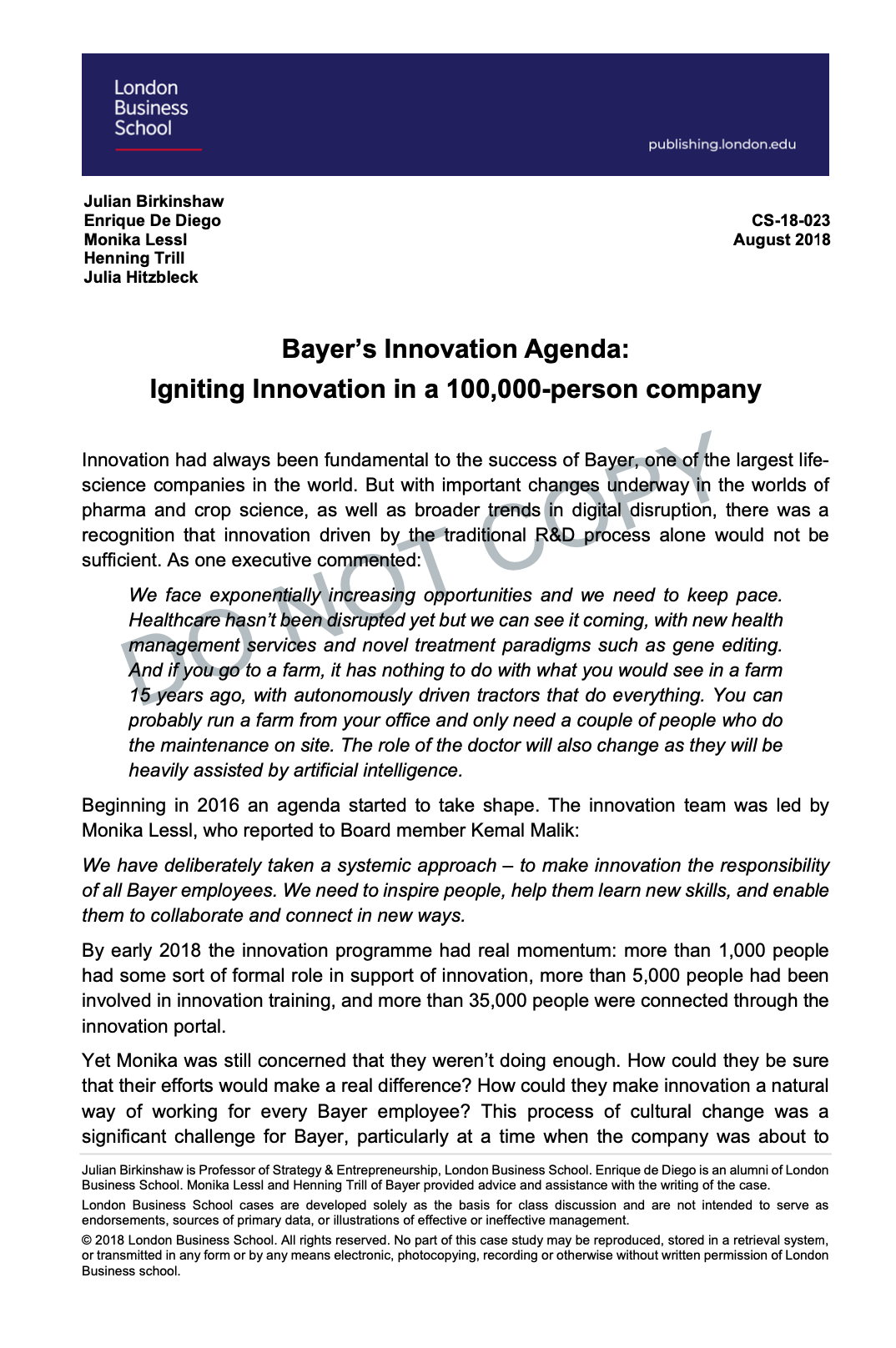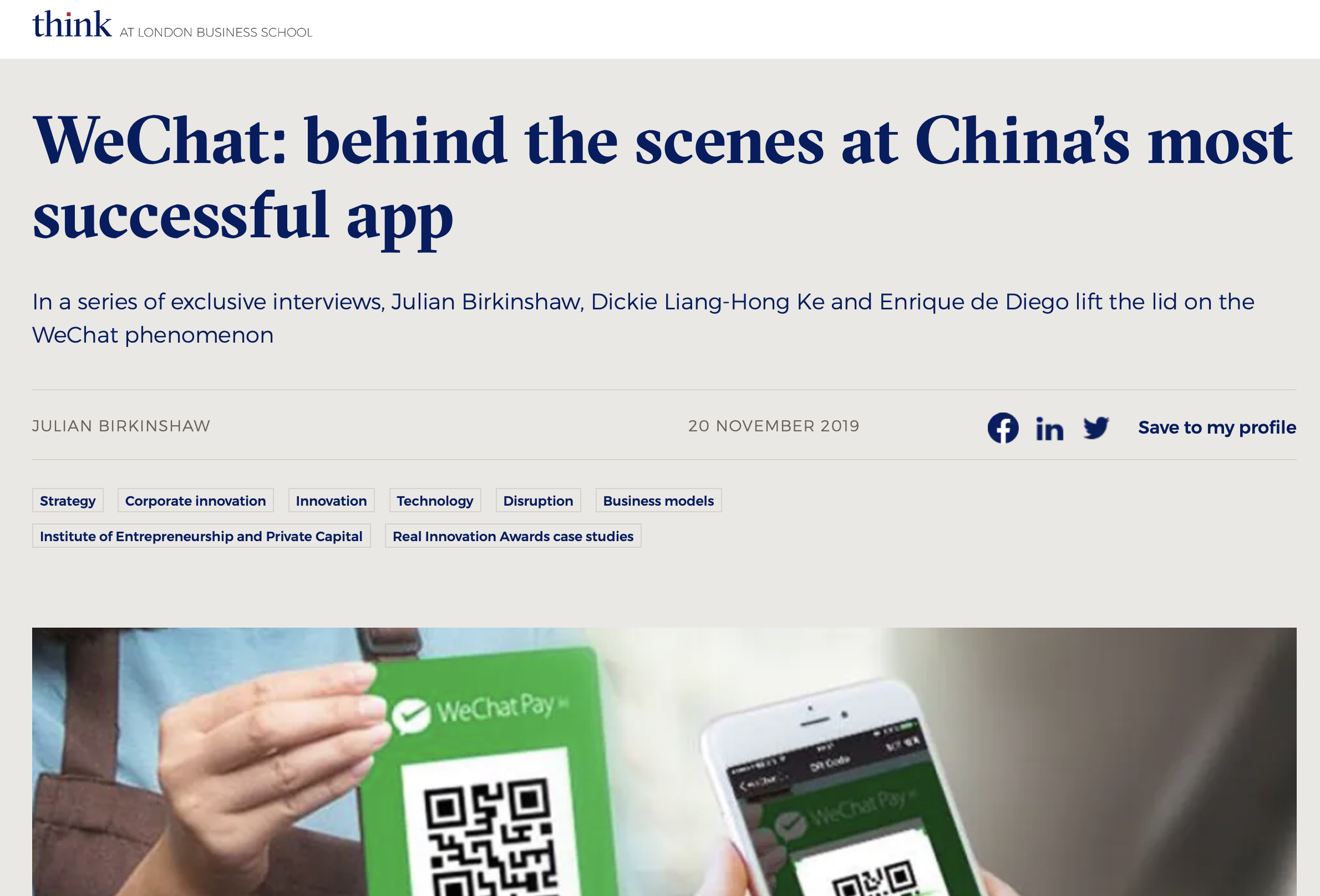Tencent provides a good example of how a company swiftly changed its product mix to embrace disruptions in its core market; i.e. by moving from QQ as a PC-based product to WeChat as a mobile-phone based product.
One of the reasons WeChat was so successful is that it was created by a separate team, operating at a distance and with enormous degrees of freedom away from its parent company.
WeChat is a good example of a multi-sided platform, where users value having access to multiple services and advertisers, and vice versa. The case provides useful insights into how that platform was created.
WeChat’s internal process for innovation shows how to get the balance between bottom-up idea generation and top-down control right. It underlines the value of a visionary leader who has an eye for how all the parts of the product fit together in a coherent way


